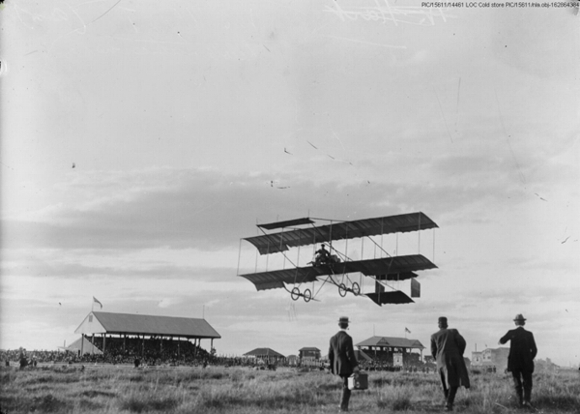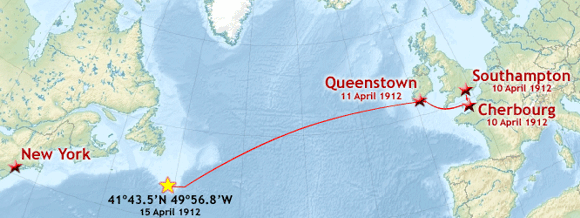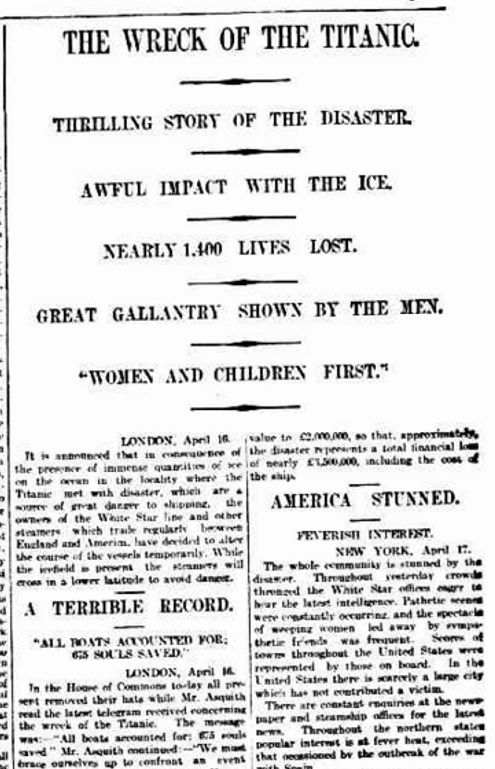The Day the World Changed
There has been numerous key dates over the years (or decades, and in reality centuries) which have been defining, and have changed the course of history, or life as people know it. … wars, fires, plagues, assassinations, accidents, deaths and so on.
Everyone has their own “key dates” for various reasons.
But for me, 14 March 2020 is that day.
Why this date?
Well I was on a cruise ship with a whole bunch of geniemates, on the way to Tasmania as part of the Unlock the Past genealogy cruise. But, again why?
Well, it was the day that the captain of the Pacific Aria ship advised passengers, that 3 days into our 8 day cruise, we would not be going to Tasmania as planned, but instead heading straight back to Adelaide (where the ship came from). This was due to all P&O cruise ships “pausing” their operations as a precautionary measure in regards to the Coronavirus.
Of course I’d heard of the Coronavirus before then, it had been in the news. But it wasn’t BIG news. But with each passing day, it certainly became so.
While it began in China back in December 2019, it had reached Australia.
The numbers of those infected kept rising. The deaths started happening. So the cruise ships stopped. The planes cut flights. State borders were closed. Mandatory 14 day quarantine was introduced. Pubs, clubs, gyms, even playgrounds were closed and so on. The world HAD changed … all just within a few days.
“Self isolation” and “social distancing” became the new key words.
Pretty much every country in the world is faced with this pandemic. But when it gets to your own country, your own area, it really hits home.
Prior to leaving on the cruise, life seemed pretty normal, however coming back after those few days away – there’s no doubt that it had changed. The supermarkets were insane. While food is obviously a necessity, you really needed to be brave to go there. I made a comment to someone recently that this pandemic has brought out the best in some people with their kindness and generosity, but sadly the worst in others.
It’s going to be months … most likely many months, before life resembles what it was. But this graphic pretty much sums it up …
Take care of yourself and your loved ones. Stay isolated not only for your own safety, but for the safety of others as well.
And while we ‘re self isolating, keep a journal. Can you imagine reading a journal written my your grandparents or great grandparents of their experiences during the war or even the Great Depression. It would be an eye opener for sure, and something you would treasure. So keep a journal detailing your own thoughts and experiences in this life changing moment in history.
And for all of the people who never have enough time to do your own research (myself included) … let’s do this. It’s the perfect opportunity to get some research done. Some scanning, of filing that “pile” of paperwork etc. etc … make the most of your time. [Note, I’m actually telling myself this (not just you), so let’s see how we all go in a few months time].
——
P.S. For the record, I don’t know of anyone that was sick (other than seasick) on the Pacific Aria during our cruise, and haven’t heard of anyone who was on that ship having tested positive for COVID-19 since returning home … though sadly I know others on other ships weren’t so fortunate.
Remembering Genealogy Day
Did you know that there is a ‘Genealogy Day’?
Yes, there is. And no, I’m not making it up … you can check it out for yourself here. Genealogy Day is held on the second Saturday of March, which means that for 2018 it was last Saturday (10th March).
I knew about it. I knew it was coming up, but life over the past few weeks with Congress (both the lead up to it, and during) was just a tad crazy, so no blog post got written about it beforehand. So instead I’m belatedly remembering Genealogy Day.
I spent last Saturday at Congress (Australia’s big genealogy conference), so was surrounded by 600+ genealogy peeps, who were being enthused and inspired by the speakers. So that’s a pretty good way to spend Genealogy Day, so I’m not complaining.
But for those of you who missed Genealogy Day, why not just belatedly celebrate it anyway. And excuse to have a genealogy day sounds good to me, anyway here’s some suggestions of things you can do to help ‘celebrate’ Genealogy Day:
1. Enter more names into your family tree. Do you have lots that you’ve found, but just have got around to entering into your genealogy program? Ok, well maybe that’s just me then.
2. If searching is more your thing, why not instead of heading to the ‘usual’ sites you visit try a different one. MyHeritage and The Genealogist are two that have very different records to the others.
3. If it’s a nice day, take a trip to a cemetery (or two or three), and do the grave walk.
4. Visit a relative, and ask them a few questions about their past, and be sure to take notes, or record it by audio or video.
5. Start (or continue) scanning your photos and documents. The pile will eventually go down, I promise.
6. Filing. I know it’s not a fun job, but it’s even less fun when you can’t find that record that you know you have … somewhere. So spend an hour or so and do a little filing. You’ll be thankful for it later.
7. Create a timeline of one of your ancestors, and see where you have gaps. It’s quite fascinating to see.
8. Find a comfy chair and read a genealogy magazine or two – or a genealogy book.
9. Watch a genealogy Webinar or listen to a Podcast. There’s plenty around.
10. Visit your local genealogy or historical society – or even your local library, and check out the genealogy section.
11. Explore the FamilySearch site beyond just the searching (check out the Wiki, the Photos, the Indexing, the Family Tree as so on).
12. Help someone with a query – RAOGK (Random Acts of Genealogical Kindness).
13. Do some transcribing. You might head to the Trove newspapers for that, or the NAA Soda site, FamilySearch Indexing or a number of others.
14. Start a genealogy blog. You’ve been wanting to for a while haven’t you … so JUST DO IT!
15. If crafting is more your thing, create a heritage scrapbook page or two, showcasing your family history.
16. Create a catalogue of all books, CDs, programs, maps, microfiche etc. that you have that are genealogy-related. It helps to know what you have!
17. Start (or continue) writing your own life history. Remember that the recent-past is just as important as the long-ago past.
18. Sadly your photo collection hasn’t sorted itself, so why not get a start on it.
19. While we’re on the topic of photos, why not create show off your ancestors with a “photo wall”
20. If you are into social media, check out all the genealogy-related Facebook groups/pages there are now (11,700 at last count). And if you are a tweeter, type #genealogy in the search box, and see what you come up with. It’s a great way to find new people to follow.
21. Go ahead and order that DNA kit that you’ve been wondering about for a while.
So there’s just a few suggestions, but there’s literally a hundred more that I could write. But I’m sure each of you will find your own way to celebrate. So Happy Genealogy Day for whenever you choose to belatedly celebrate it. Or if not, just pop it on your calendar so you’ll remember it (and be ready to celebrate it) in 2019.
6 January 1912 – Australia’s First Plane Crash
6 January 1912, is the date Australia’s first official plane crash happened.
But before going into that, just a little background information.
Australia’s earliest recorded attempts at powered flying took place in 1909, and within a year, numerous aircrafts were being imported, with others being locally made. As you can imagine, some of these new flying machines proved less successful than others, with mild accidents on take-off occurring in several cases. However it was inevitable that a ‘proper’ aeroplane crash would take place sooner or later.
William Ewart Hart is the man who’s name is now in Australia’s history as being the pilot of Australia’s first plane crash.
Billy Hart (as he was known) was born in Parramatta, New South Wales in 1885, when at age 16 he was apprenticed to a local dentist. By 1906 was a registered dentist himself, and after registration he practiced as a dentist in Wyalong, where he rode the first motorcycle and drove the first car in town. Quite the man, no doubt! He went on to practice in Newcastle, New South Wales.
In 1911, at age 26 Billy Hart learnt to fly and became the first man to hold an Australia aviator’s licence. His No. 1 Certificate of the newly-created Aerial League of Australia was granted on 5 December 1911. Hart imported a British aircraft for £1300 (approx $140,000 today), and maintained it in a tent at Penrith, New South Wales. However, shortly after its purchase, strong winds overturned the tent and the plane, reducing the aircraft to a wreck.

William Ewart Hart in his Bristol Boxkite Biplane, 1912.
(State Library of New South Wales, Ref: PXA 1063 / 276)
Not to be defeated, Billy salvaged what he could, and built a biplane from the parts. On 6 January 1912 he was demonstrating his aircraft, and had military officer Major Rosenthal as a passenger, however when he was at a height of 180m (approx 600 feet), he hit turbulence and began to lose altitude. As it dropped, the biplane hit a signal post, then came to rest upside down beside the railway line, so this is Australia’s first ‘official’ aeroplane crash. You can read about this incident in the detailed report that appeared in the Geelong Advertiser.
Although he sustained some minor injuries, Hart and his passenger survived, and he was inclined to blame the Major’s weight for the crash. His words were reported as follows: “It really was a trial run and when I say that Major Rosenthal weighed 17 stone (about 107kg) the test my machine was put to will be understood.”

Dentist William Hart, holder of Australian pilot licence number 1 flying a bi-plane, Sydney, ca. 1912 [NLA reference: PIC/15611/14461 LOC Cold store PIC/15611]

details of the crash in The Australasian, (Melbourne, Vic.) p. 41. 7 September 1912 http://nla.gov.au/nla.news-article143277314
Billy Hart continued dentistry, and died of heart failure in 1943 at the age of just 58.
He was said to be a remarkable man, respected and admired Vice President of the Air Force Association and to quote from their minutes: “resourceful, courageous pioneer,
soldier, airman, loyal friend and good citizen, lovable personality, and gallant gentleman.
You can read more about William Ewart “Billy” Hart here;
– Wikipedia
– Australian Dictionary of Biography
– Parramatta Heritage Centre
15 April 1912 – The Day the “Titanic” Sank
It was a disaster like no other at that time. The world’s biggest (and self-proclaimed ‘unsinkable’) ship set off from Southampton on 10 April 1912, bound for New York. It was her maiden voyage, and the crowd seeing it off was huge. Little did they know that just 5 days later all onboard would be fighting for their life, with the vast majority not making it.
2.20am, 15 April 1912, just a mere 2 hours and 40 minutes after hitting an iceberg in the Atlantic Ocean, the unthinkable happened to the unsinkable. The Titanic sank.

Route of Titanic’s first/last maiden voyage, 10-15 April 1912
(Creative Commons licence, Prioryman)
total capacity: 3547 passengers and crew
total onboard: 2206 passengers and crew
total survived: 703 passengers and crew
That was 105 years ago, and it still has an impact.
The movie below is from British Pathè’s collection, and is just one of the 85,000 old movies they have made freely available. Showing actual footage of the ship, the rescue ships, together with interviews of some survivors, it is chilling.
There’s no doubt that the Titanic has become the stuff of legend.
I remember asking my grandma about it though she wasn’t born at the time, but her older sisters were, and they remembered it, being aged 11 and 12.
So I decided to see what the local South Australian newspapers wrote about it.
The following was the first report of it in South Australia’s “The Advertiser”, was was dated 18 April 1912. Not too bad considering that communication back then wasn’t as instant as we have today. It didn’t make front page like it did in the US or England, but it did make a big article on page 9. The article blow is just a small portion of it.

The Wreck of the Titanic, (18 April 1912, The Advertiser , p. 9.) http://nla.gov.au/nla.news-article5336985
And as you would expect, every Australian newspaper ran the story, together with all the reports afterwards. For newspapers just in South Australia, and just in April 1912, Trove has 1000 articles. I’ll admit it, I didn’t read them all.
There’s no doubt this tragedy rocked the world, but something that I was reminded of reading a current news article relating to the 105th Anniversary of this event, was of those who had to go out afterwards and “collect the dead”. We tend to think of the rescuers, but forget about those who went in afterwards.
“As rescue ships approached the ghostly sea where the Titanic plunged into the ocean in the dead of the cold night on April 15, 1912, white specks began to appear in the distance. To onlookers aboard, they looked like “clustering and moving along the waves like a flock of seagulls”. Hundreds of them. All grouped together. The white specks were frozen bodies of the dead, wrapped in the ill-fated steamer’s life belts. For days, great quantities of these bodies, along with doors, pillows, chairs, tables, and scattered remains, floated along the North Atlantic.”
You can read the “Rescue Crews Reveal the Grisly Aftermath of the Titanic Tragedy” here.
So on this day, 105 years on, we remember not only those who lost their life and their families, as well as who were fortunate enough to survive this tragedy, but also those who had the horrific task of “cleaning up” afterwards. Every one of them would have had their life changed from the events that took place on 12 April 1912.
More info on the Titanic:
For more Titanic related old movies from British Pathè click here
100 Facts about the Titanic
Timeline of the Titanic
Wikipedia’s entry for RMS Titanic
Please Note: there are slight discrepancies in the number who died, and the number who survived. One articles says 703 survived, another says 706, another says 705. Another article says 1503 died, another 1517. I’m no professional historian, so I can’t say for sure which is the real figure, but it would be a matter of looking further at how each have calculated their numbers.





